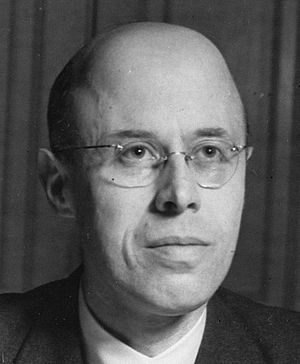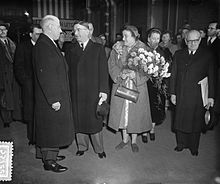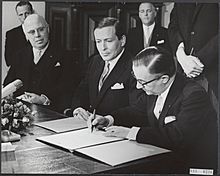Louis Beel facts for kids
Quick facts for kids
Louis Beel
|
|
|---|---|

Louis Beel in 1945
|
|
| Prime Minister of the Netherlands | |
| In office 22 December 1958 – 19 May 1959 |
|
| Monarch | Juliana |
| Deputy | Teun Struycken |
| Preceded by | Willem Drees |
| Succeeded by | Jan de Quay |
| In office 3 July 1946 – 7 August 1948 |
|
| Monarch | Wilhelmina |
| Deputy | Willem Drees |
| Preceded by | Willem Schermerhorn |
| Succeeded by | Willem Drees |
| Vice-President of the Council of State | |
| In office 1 August 1959 – 1 July 1972 |
|
| Monarch | Juliana |
| Preceded by | Bram Rutgers |
| Succeeded by | Marinus Ruppert |
| Minister of Social Affairs and Health |
|
| In office 22 December 1958 – 19 May 1959 |
|
| Prime Minister | Himself |
| Preceded by | Ko Suurhoff |
| Succeeded by | Charles van Rooy |
| Member of the Council of State | |
| In office 1 June 1959 – 1 August 1959 |
|
| In office 1 April 1958 – 22 December 1958 |
|
| Vice President | Bram Rutgers |
| Minister of Justice | |
| In office 4 February 1956 – 15 February 1956 Ad interim |
|
| Prime Minister | Willem Drees |
| Preceded by | Leendert Antonie Donker |
| Succeeded by | Julius Christiaan van Oven |
| Deputy Prime Minister | |
| In office 2 September 1952 – 7 July 1956 |
|
| Prime Minister | Willem Drees |
| Preceded by | Josef van Schaik |
| Succeeded by | Teun Struycken |
| Minister of Social Work | |
| In office 2 September 1952 – 9 September 1952 Ad interim |
|
| Prime Minister | Willem Drees |
| Preceded by | Office established |
| Succeeded by | Frans-Jozef van Thiel |
| High Commissioner of the Dutch East Indies |
|
| In office 29 October 1948 – 2 June 1949 |
|
| Monarch | Juliana |
| Preceded by | Hubertus van Mook |
| Succeeded by | Tony Lovink |
| Minister of Colonial Affairs | |
| In office 30 August 1947 – 3 November 1947 Ad interim |
|
| Prime Minister | Himself |
| Preceded by | Jan Jonkman |
| Succeeded by | Jan Jonkman |
| Member of the House of Representatives | |
| In office 27 July 1948 – 7 September 1948 |
|
| In office 4 June 1946 – 3 July 1946 |
|
| Minister of the Interior | |
| In office 6 December 1951 – 7 July 1956 |
|
| Prime Minister | Willem Drees |
| Preceded by | Frans Teulings (Ad interim) |
| Succeeded by | Julius Christiaan van Oven (Ad interim) |
| In office 23 February 1945 – 15 September 1947 |
|
| Prime Minister |
See list
|
| Preceded by | Hendrik van Boeijen (Ad interim) |
| Succeeded by | Piet Witteman |
| Personal details | |
| Born |
Louis Joseph Maria Beel
12 April 1902 Roermond, Netherlands |
| Died | 11 February 1977 (aged 74) Utrecht, Netherlands |
| Cause of death | Leukemia |
| Political party | Catholic People's Party (from 1945) |
| Other political affiliations |
Roman Catholic State Party (1933–1945) |
| Spouse |
Jet van der Meulen
(m. 1926; |
| Children | 3 daughters and 1 son |
| Alma mater | Radboud University Nijmegen (LL.B., LL.M., PhD) |
| Occupation | Politician · Civil servant · Jurist · Lawyer · Researcher · Nonprofit director · Author · Professor |
Louis Joseph Maria Beel (born April 12, 1902 – died February 11, 1977) was an important Dutch politician and legal expert. He served as the Prime Minister of the Netherlands two times. His first term was from 1946 to 1948, and his second was from 1958 to 1959. He was a member of the Roman Catholic State Party and later helped start the Catholic People's Party. This party is now known as the Christian Democratic Appeal (CDA).
Beel studied Law at Radboud University Nijmegen. He worked as a civil servant and a Lawyer. During World War II, he opposed the German occupation. After the war, he became the Minister of the Interior. He then became Prime Minister for the first time. Later, he was the High Commissioner of the Dutch East Indies. He also taught law as a professor. Beel was known for being a good manager and for helping different groups work together. He was given the special title of Minister of State in 1956.
Contents
Louis Beel's Life and Career
Early Life and Education
Louis Joseph Maria Beel was born on April 12, 1902, in Roermond, a town in the southern part of the Limburg province in the Netherlands. He grew up in a Catholic community. He went to school at the Bisschoppelijk College in Roermond. After graduating in 1920, he started working as a clerk for the city of Roermond.
In 1923, the Roman Catholic University was founded in Nijmegen (now Radboud University Nijmegen). Louis Beel began studying law there part-time in 1924. He earned his bachelor's degree in 1925. He then moved to Zwolle and worked for the government of the Overijssel province. While in Zwolle, he got married and had his first child, a son. He also taught classes and wrote articles about law.
In 1928, Beel earned his master's degree in law from Radboud University Nijmegen. He then moved to Eindhoven in 1929 and worked for the city. Eindhoven was growing fast because of the Philips company. In Eindhoven, his three daughters were born. Beel continued to teach and publish legal articles. In 1935, he earned his doctorate in law.
Role During World War II
By 1942, Louis Beel was a Director of Social Affairs and Deputy Town Clerk in Eindhoven. He resigned from his job because he did not agree with the German occupation of the Netherlands. He often had to hide to avoid being captured by the Germans.
Eindhoven was freed on September 18, 1944. Beel was seen as a leader by the Dutch resistance fighters. He spoke for a group of important citizens in Eindhoven who had resisted the Germans. This group wanted a new political system after the war. They sent a message, written by Beel, to Queen Wilhelmina, who was in London.
Beel was asked to advise the temporary government in the liberated southern Netherlands. He traveled to London in January 1945 to advise on helping war victims. On January 10, he met with Queen Wilhelmina. This meeting changed his life.

Political Career Highlights
Queen Wilhelmina saw Beel as a true patriot. She wanted new leaders to replace her wartime government. Beel was quickly appointed Minister of the Interior in the last government-in-exile. This government resigned in May 1945 after the war ended. Beel was asked to stay on as Minister of the Interior in the new government. He agreed, even though he was hesitant. He moved his family to Wassenaar, near The Hague, where the government is located.
Elections were held in May 1946. Beel spoke against the economic plans of the Prime Minister. The Catholic People's Party won many seats, but no party had a full majority. Queen Wilhelmina asked Beel to form a new government. He became Prime Minister of a "red-Roman coalition," which included socialists and Roman Catholics. This government helped shape the Netherlands after the war.
In 1948, new elections were needed to change the constitution. This was important because of problems in the Dutch East Indies (now Indonesia), where nationalists wanted independence. Beel's party won again, and he was asked to form a new government. However, he could not form a broad government with socialists, Catholics, and liberals. Another politician, Josef van Schaik, succeeded by making Willem Drees Prime Minister.
Drees then appointed Beel as the High Commissioner of the Crown in the Dutch East Indies. He served from October 1948 to June 1949. Beel tried to prevent an agreement with the Republic of Indonesia because he believed they did not want a federal state. He was unsuccessful and resigned.
Beel returned home in May 1949. A few months later, he became a professor of administrative law at his old university in Nijmegen. This was one of his early dreams.
In November 1951, the Minister of the Interior suddenly died. Prime Minister Drees asked Beel to return to government. Beel agreed and became Minister of the Interior again. After the 1952 elections, he continued in this role and also became Deputy Prime Minister.
In July 1956, Beel resigned from the government. He became the chairman of a special committee. This committee was asked by Queen Juliana and Prince Bernhard of Lippe-Biesterfeld to help solve problems with the Royal Family. The committee quickly finished its work with a secret report. Three months later, Beel was given the honorary title of Minister of State.
In 1958, Beel was appointed a member of the Council of State. Soon after, he was asked to form his second government. This was a temporary government from December 1958 to May 1959, which had to prepare for new elections. After these elections, Beel helped another politician, Jan de Quay, form a new government. This ended the "red-Roman coalition" that Beel had started.
The new government appointed Beel as Vice-President of the Dutch Council of State. This is a very important position in the Dutch government. The head of state (the monarch) is the honorary President.

Later Life and Legacy
Louis Beel retired from politics on July 1, 1972, at the age of seventy. His wife had passed away a few years earlier. He moved to the quiet village of Doorn with his eldest daughter and her helper.
Beel remained very influential, even after leaving active politics. As Vice-President of the Council of State, he had a big impact on the government. He was also trusted by the Royal Family. Because of his quiet way of working and his influence behind the scenes, he was nicknamed "The Sphinx" and "Viceroy of the Netherlands." He helped form almost every new government during his thirteen years as Vice-President.
On February 11, 1977, Louis Beel died in the University Hospital Utrecht from leukemia. He was 74 years old.
Beel is remembered as the only Prime Minister after World War II to serve two terms that were not back-to-back. Even though his terms as Prime Minister were short, his work as a Minister in the 1940s and 1950s, and later as Vice-President of the Council of State, had a lasting impact.
See also
 In Spanish: Louis Beel para niños
In Spanish: Louis Beel para niños

